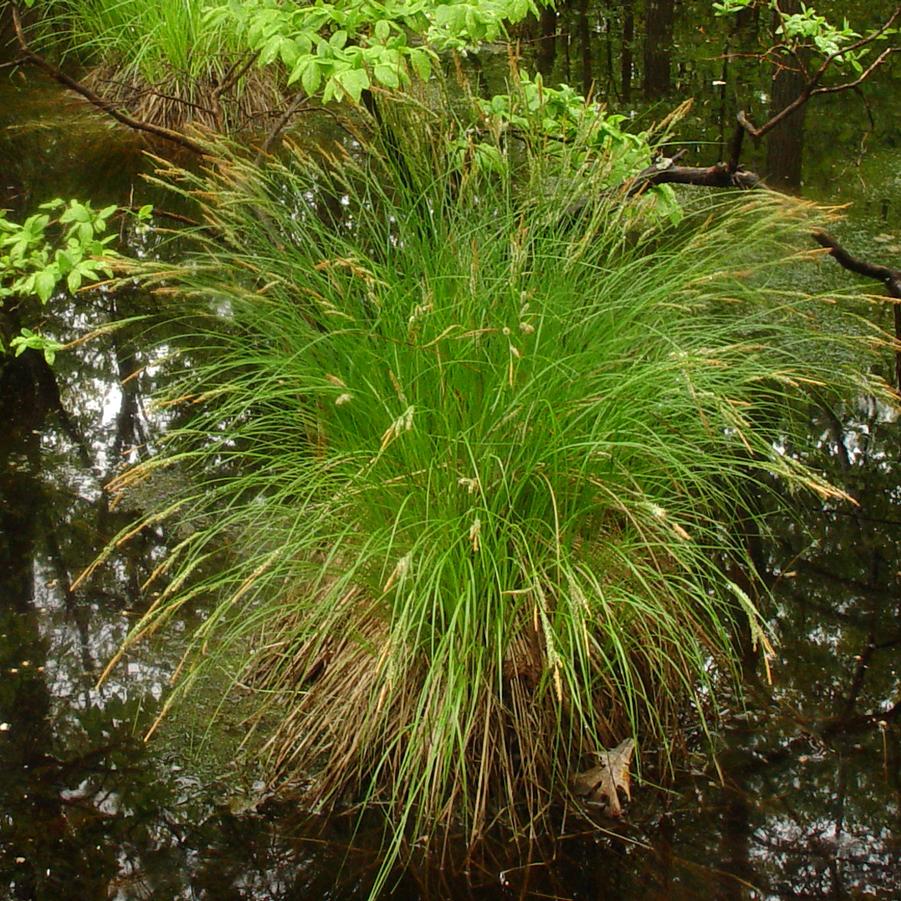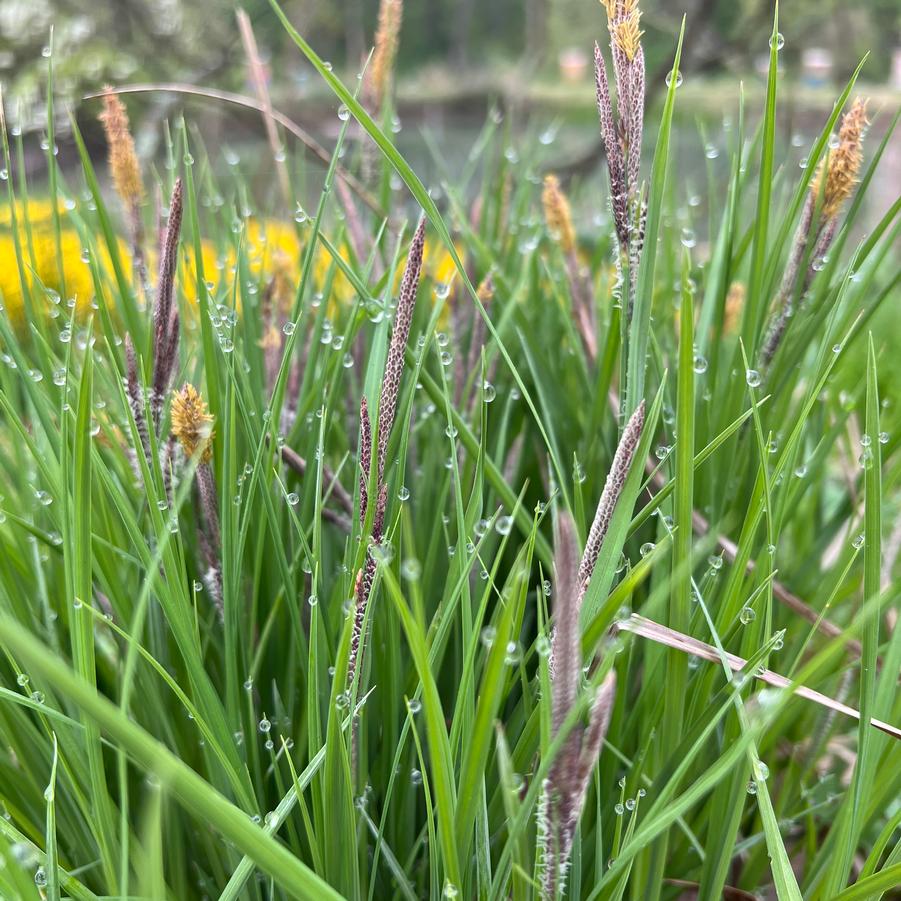



Plant Calculator
Enter the approximate length and width of the area you will be planting and click 'Calculate' to determine how many Carex stricta you will need.
Correct and successful spacing is complex and depends on project conditions. We encourage you to call us at 877-ECO-PLUG for project specific recommendations and further assistance.
Carex stricta
tussock sedge
- Category: Grass, Carex, Native
- Hardiness Zone: 3-8
- Height: 2-3 Feet
- Spread: 3-5 Feet
- Spacing: 12 Inches
- Bloom Color: Green
A wetland native that forms dense tussocks of straw-colored leaves at the base with bright green new growth emerging from the top. Spreads via rhizomes. Found in wet meadows. Emergent aquatic.
Click here to download technical information for growers:
Wetland Indicator Status
| • | Obligate Wetland (OBL) |
Plug Type
| • | Landscape Plug™ |
For Animals
| • | Deer Resistant |
Propagation Type
| • | Open pollinated |
Grass Type
| • | Cool Season |
Additional Information about Carex stricta
Carex stricta, or tussock sedge, is usually the dominant plant in sedge meadows that run along rivers and streams in North America. Preferring to grow in mucky or sandy soils that are inundated with water during spring flooding, their fibrous roots and rhizomes anchor them to the soil and provide filtration and habitat in wetlands. A wonderful plant for erosion control and water filtration in designed plant systems such as bioswales, constructed wetlands, and along water edges, this plant is quite aggressive and will form a solid carpet of greenery quickly.
Tussock sedge is named as such due to the ‘tussocks’, or hummocks, which are the slow buildup of their root systems and decayed foliage to create a large clump that raises them out of the water and gives the root system air. In areas without constant water inundation, Carex stricta doesn't form clumps and instead, spreads readily by rhizome. A cool season carex, it can be left to its devices of golden-hued straw in the winter without cutbacks in naturalized areas to help continue water filtration, suppress weeds and woody plant material, and provide habitat for overwintering insects. In more managed areas, it can be cut back in early spring but also responds well to controlled burns.
Similar in looks and nature to Carex emoryii, Carex stricta is highly recommended in areas where you need a plant that works in areas with lots of water. It can grow in drier sites with supplemental water provided. We love tussock sedge for its ability to carpet a site, suppressing weeds and waving in the breeze in late summer. It’s great habitat for birds and insects and several Lepidoptera larvae feed on its leaves.
Growing & Maintenance Tips for Carex stricta
Prefers moist to wet soils but can grow away from bodies of water as long as adequate moisture is provided. Spreads via rhizomes. Propagate by division of clumps every few years. Cut foliage to the ground in early spring before new growth occurs. Use as a border to ponds and along streambanks as a groundcover.
